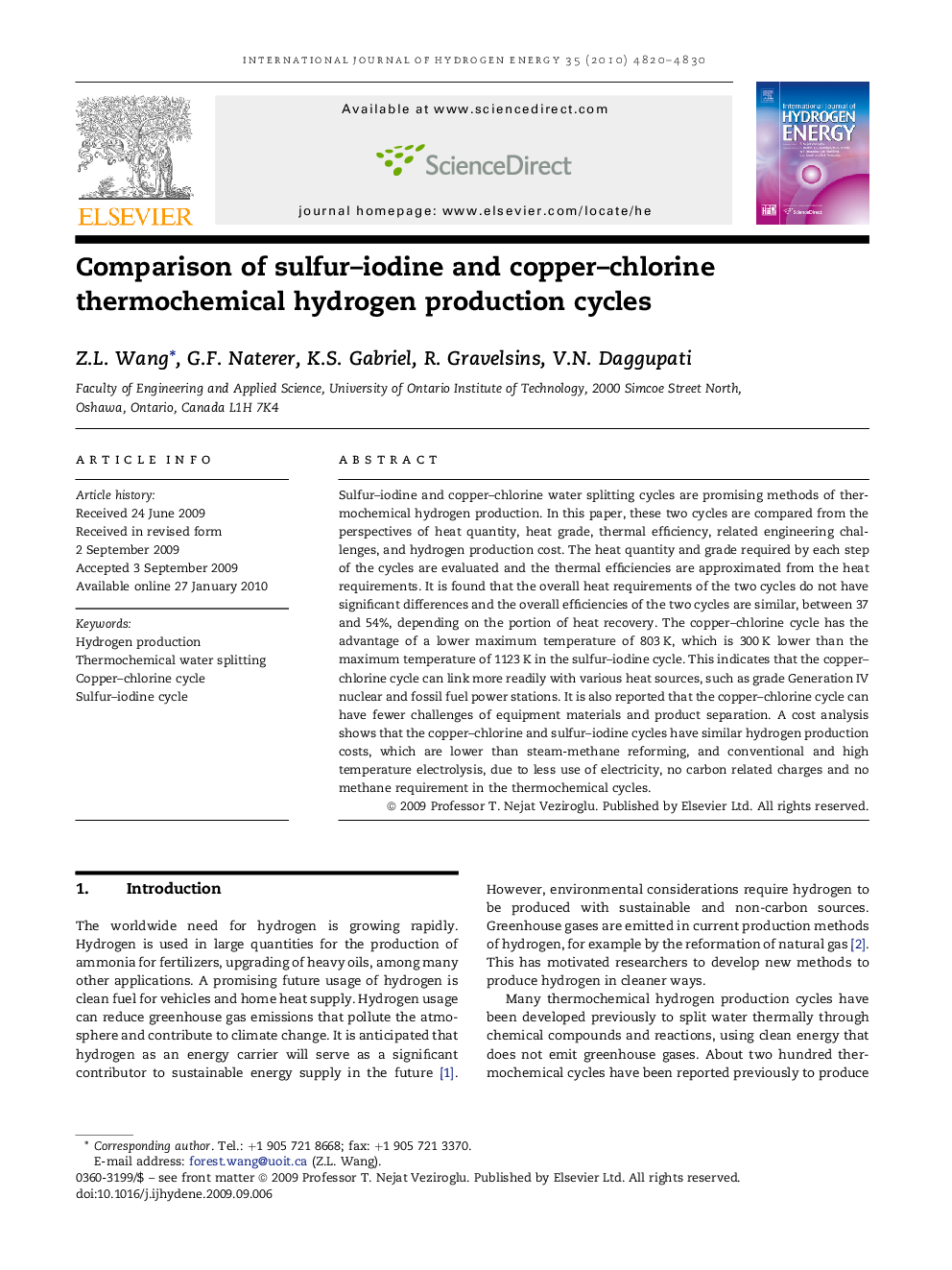| کد مقاله | کد نشریه | سال انتشار | مقاله انگلیسی | نسخه تمام متن |
|---|---|---|---|---|
| 1282826 | 1497607 | 2010 | 11 صفحه PDF | دانلود رایگان |

Sulfur–iodine and copper–chlorine water splitting cycles are promising methods of thermochemical hydrogen production. In this paper, these two cycles are compared from the perspectives of heat quantity, heat grade, thermal efficiency, related engineering challenges, and hydrogen production cost. The heat quantity and grade required by each step of the cycles are evaluated and the thermal efficiencies are approximated from the heat requirements. It is found that the overall heat requirements of the two cycles do not have significant differences and the overall efficiencies of the two cycles are similar, between 37 and 54%, depending on the portion of heat recovery. The copper–chlorine cycle has the advantage of a lower maximum temperature of 803 K, which is 300 K lower than the maximum temperature of 1123 K in the sulfur–iodine cycle. This indicates that the copper–chlorine cycle can link more readily with various heat sources, such as grade Generation IV nuclear and fossil fuel power stations. It is also reported that the copper–chlorine cycle can have fewer challenges of equipment materials and product separation. A cost analysis shows that the copper–chlorine and sulfur–iodine cycles have similar hydrogen production costs, which are lower than steam-methane reforming, and conventional and high temperature electrolysis, due to less use of electricity, no carbon related charges and no methane requirement in the thermochemical cycles.
Journal: International Journal of Hydrogen Energy - Volume 35, Issue 10, May 2010, Pages 4820–4830